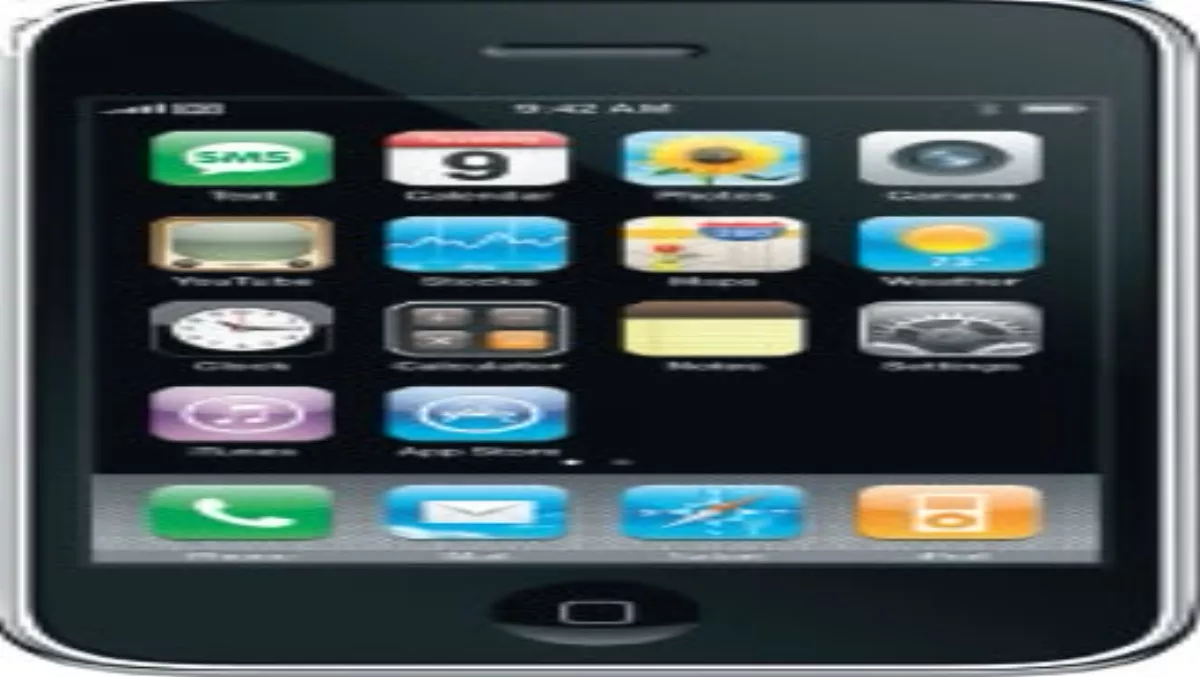
BY THE TIME YOU READ THIS, YOU SHOULD BE ABLE TO purchase the new 3G iPhone – or at least stand in line for one. The much-vaunted touchscreen phone that has stormed the mobile world was due to go on sale here on July 11th. Vodafone – so far the only licensed distributor – was asking people who were interested to register online (www.vodafone.co.nz/iphone/index.jsp) “so you can be one of the first to get all the latest updates on when and how you can get it on a great On Account plan”.
Local pricing for the 3G iPhone had yet to be announced, but in the USA the 8GB model was selling for $US199 and the 16GB model for $US299. The US deal requires a two-year connectivity contract with AT&T, although it appears that exclusive connectivity deals will no longer be required in some countries, including Australia.
In New Zealand, Vodafone 3G connections cost from $50 a month. Coverage, as you’ll see on the map at tinyurl.com/56jbq9 is okay for major centres in the North Island but rather sparse in the South.
The Apple/Vodafone partnership to launch the 3G iPhone in 10 countries was part of a global announcement about the new phone and the MobileMe Internet service (more about that later).
The new iPhone features built-in GPS for expanded location-based mobile services, and iPhone 2.0 software which includes support for Microsoft Exchange ActiveSync and runs hundreds of third party applications. It allows users to browse the Web, get map directions, or check their email while on a call. More at www.apple.com/nz/iphone
Apple CEO Steve Jobs said the new iPhone was “amazingly zippy” and could load Internet pages about 2.8 times faster than the original model. The competitive price was aimed at retaining a market share now threatened by similar phones including the OKTA Touch (sold here by Telecom), the HTC Touch, the Sprint Instinct, the BlackBerry Bold and the newly announced Samsung Omnia (see tinyurl. com/5hoter). Market analyst Info-Tech suggested Apple was just keeping up with its rivals in the smart phone field, rather than offering innovations.
Of course, the tech media were quick to point out what the new iPhone didn’t have, such as multimedia messaging (MMS - the ability to send images to other mobile phones outside of email), copy and paste function, video recording, built-in voice command and Bluetooth streaming.
Then there’s the issue of the battery. As with iPods, if the iPhone’s battery fails, you need to take it to an authorised agent to get it replaced. This will cost you upwards of $100 and if you try to do it yourself, you’ll void the phone’s warranty.
Apple is hoping that MobileMe will make the difference. MobileMe applications (www.me.com) include Mail, Contacts and Calendar, as well as Gallery for viewing and sharing photos and iDisk for storing and exchanging documents online.
With a MobileMe email account, new email messages are pushed instantly to the iPhone over the cellular network or wi-fi, removing the need to manually check email and wait for downloads. Push keeps contacts and calendars continuously up to date on the iPhone and all associated devices.
The push function also has its detractors. Washington Post tech writer Rob Pegoraro asked whether anyone really needed such a “complicated, proprietary, perhaps failure-prone” system, while security consultant Chris Gatford, of Pure Hacking, warned that push email would leave iPhone users more vulnerable to intrusion by wi-fi hackers.
A MobileMe subscription (including 20GB of storage) costs $NZ140 inc. GST per year for individuals and $NZ199 inc. GST for a Family Pack, which includes one master account with 20GB of storage and four Family Member accounts with 5GB of storage each. Users can sign up for a free, 60-day MobileMe trial at www.apple.com/nz/mobileme Apple is taking a big gamble by making the 3G iPhone so comparatively cheap, and 3G network users are likely to see quite a bit of advertising on their screens in order to keep connection charges down. The 3G ad market has been slow so far, but Apple is hoping that marketers will start submitting applications to get messages to iPhone users.
Meanwhile, the 3G iPhone is shiny, it’s packed with features, and it’s here. Expect to see them being flashed about near you soon. A local information forum is at nziphone.com